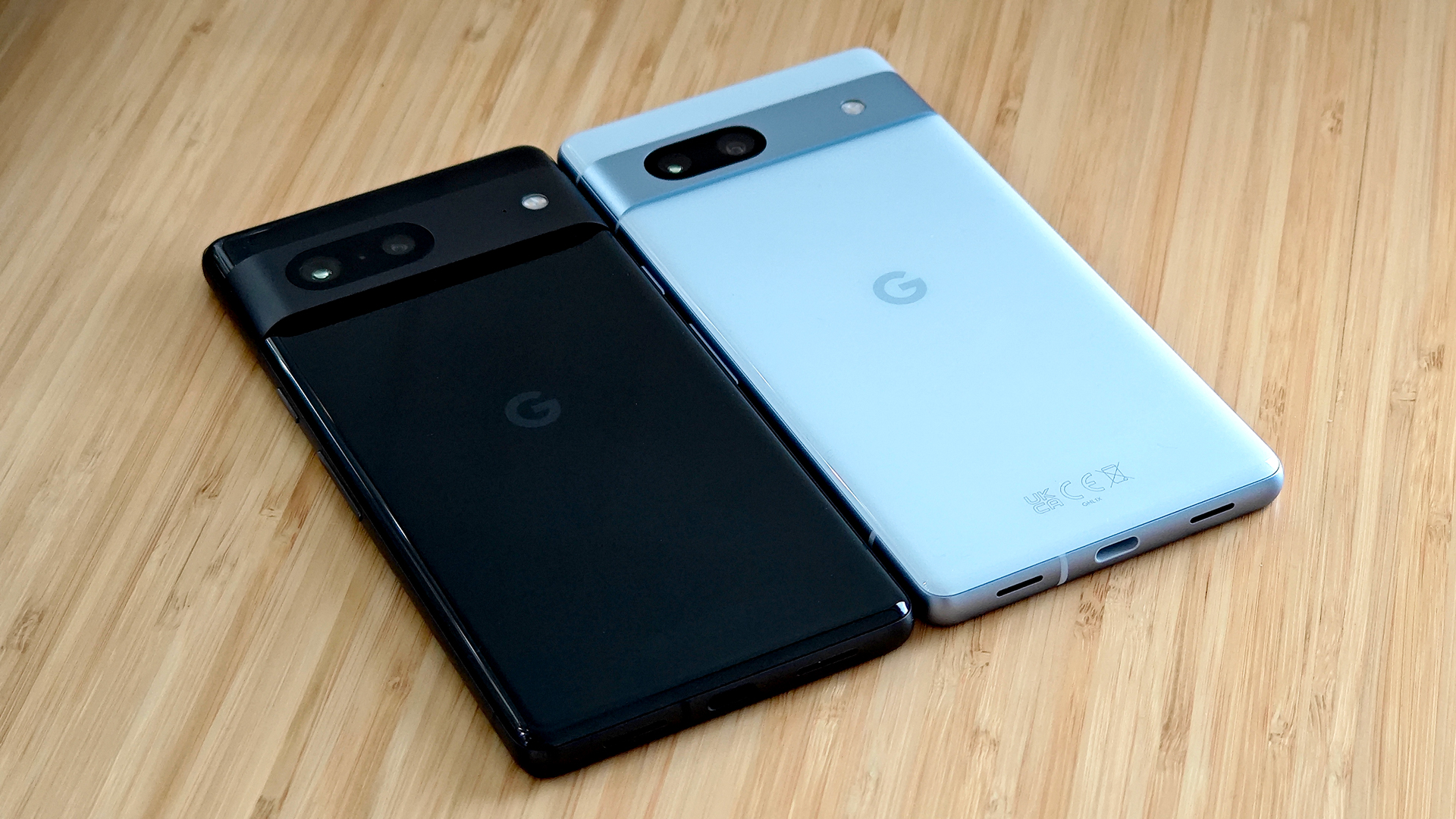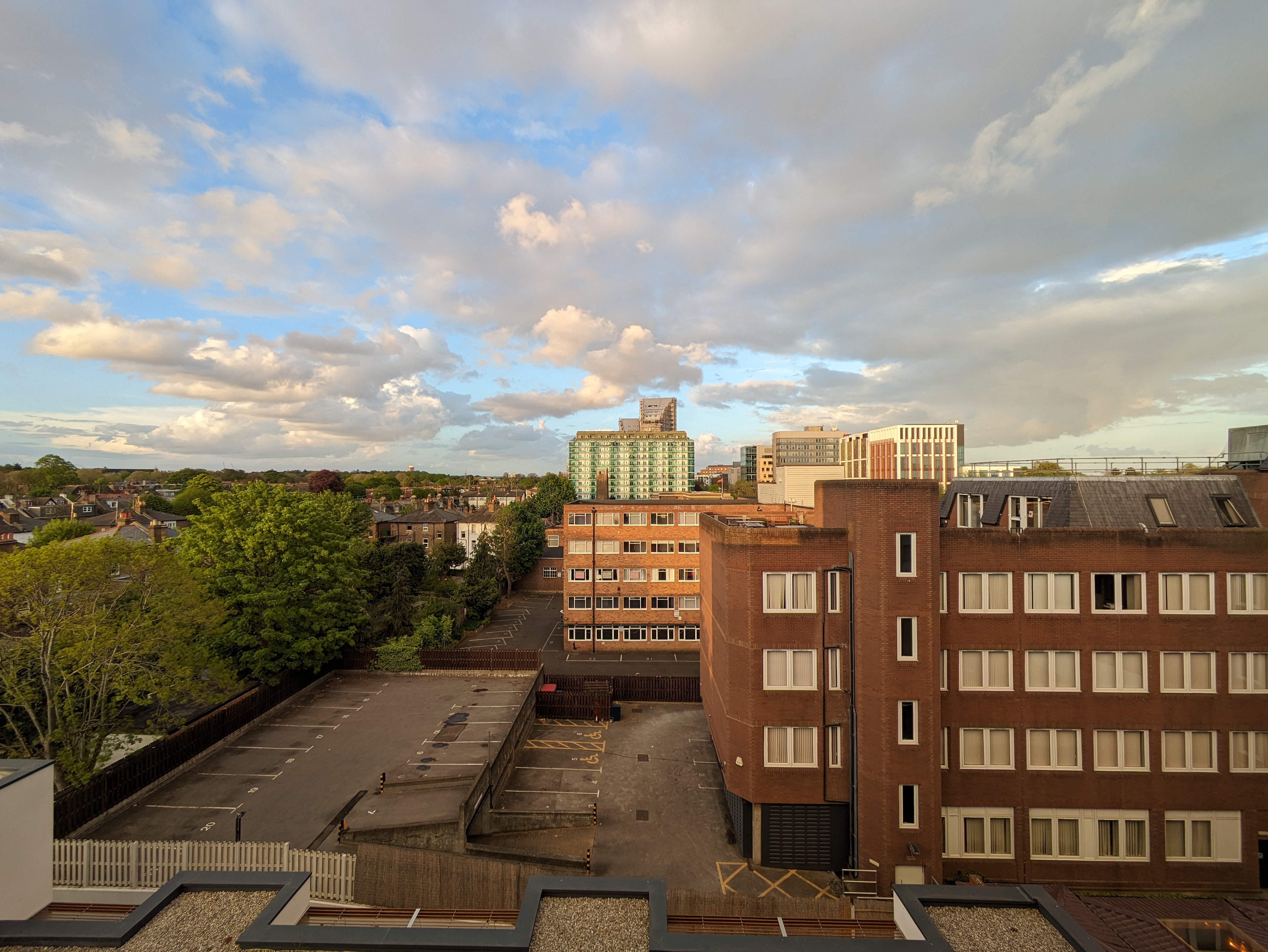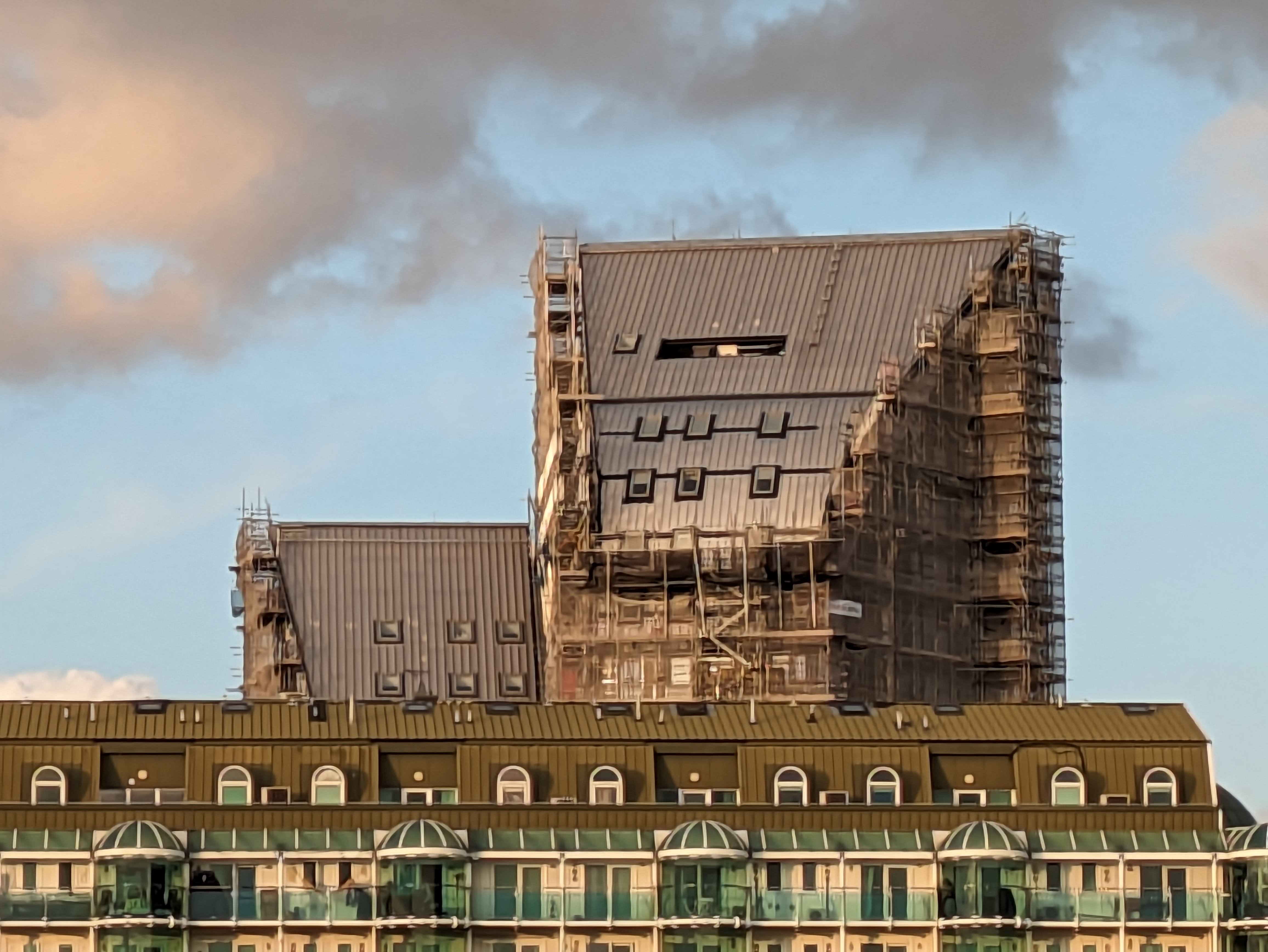Google Pixel 7a vs Pixel 7: Which is best to buy now?
Google Pixel 7a and Pixel 7: what's the difference between these low-cost alternatives to the Pixel 7 Pro?


After seeing the Google Pixel 7a, it's easy to wonder why you'd think of picking up the pricier Google Pixel 7. After all, the 7a costs £449/$499, which is a full £/$100 less than the Pixel 7, yet the two look virtually identical (ignoring the brighter colour options), share loads of features and specs, and thanks to Google adding wireless charging and a smooth 90Hz screen to the newer 7a, are matched on those fronts too. So which will it be?
Announced at Google I/O 2023, along with Google's priciest Pixel to date – the Pixel Fold – the Pixel 7a sits at the other end of the spectrum, and is an instant value champ on paper (even though it costs £/$50 more than the Pixel 6a when that launched in 2022). In fact, Google has fleshed out the Pixel 7a's features over its predecessor so much that we'd happily recommend it even with its price bump.
However, having used the Pixel 7a alongside the Pixel 7, it's a close call as to which is better. But after a very close look at the specs of both, and handling them side by side, a winner does start to emerge. Specifically, the Pixel 7's design is a bit fancier, and its storage options are more comprehensive.
The question is: are the original Pixel 7's highlights over the newer 7a variant worth extra cash, or does the latest entry-level Pixel win our recommendation?
Price
The Pixel 7 cost £549/$599 for the 128GB model, or £649/$699 for 256GB of storage when it first launched. By contrast, the Pixel 7a is only available with 128GB, and costs £449/$499. This might sound like a bargain by comparison, but it's less of one compared to the previous Pixel 6a when that launched.
Pricing over time also fluctuates significantly, which as you can see from the real-time shopping widget below, currently positions the Pixel 7 very close to the Pixel 7a's asking price. That's not a whole lot more to pay for a slightly richer finish. But it does make things a little more confusing for anyone on the hunt for a new Pixel phone.
Design
While you can easily tell the earlier Pixel 6a and newer 7a apart at a glance, the Pixel 7 and 7a could pretty much be twins. Both have metal frames and camera strips, their frames are colour-matched to complement whichever colour option you pick up, and they also have rounded sides, giving them a similar in-hand feel.
Get all the latest news, reviews, deals and buying guides on gorgeous tech, home and active products from the T3 experts
Getting into the finer details, though, and a few differences start to surface. Specifically, as you can see from the photo below, the camera bump of the Pixel 7 protrudes from the back of the phone more than that of the 7a. It also melds into the frame seamlessly, while the 7a's metal camera bump and frame are two separate elements.
The back of the Pixel 7a is plastic, despite its polished finish fooling us at first glance. The Pixel 7, by contrast, has a more scratch-resistant Gorilla Glass Victus back panel.

A photo of the Google Pixel 7 (left) alongside the Google Pixel 7a (right)
The Pixel 7 is also a little heavier than the 7a, weighing 197g, versus the 193g 7a, and it's also a few millimetres taller and wider too – unsurprising given the fact it has a slightly larger screen.
While you can pick up the Pixel 7 in Lemongrass, Obsidian and Snow, the Pixel 7a can be had in Charcoal, Sea (pictured above), and Snow, as well as Coral (exclusively from the Google Store).
Both phones are dust- and water-resistant, though the Pixel 7's IP68 rating is a little hardier than the 7a's IP67 rating. This won't matter to most – both can withstand being submerged for 30 minutes at a depth of one meter, though the Pixel 7a has been tested to slightly deeper depths of 1.5m.
Display
Both the Pixel 7 and Pixel 7a have wide Full HD resolution OLED displays that have up to 90Hz refresh rates, they both support HDR10 high dynamic range content, and in the bottom centre of each is an in-display fingerprint scanner.
If you want to get very granular, the screens come from two different manufacturers, with the Pixel 7's AMOLED screen being a Samsung panel, and the Pixel 7's gOLED screen being LG-made. You can still expect incredibly deep, inky blacks and punchy colours from both, but they might each have slightly different viewing qualities when held side-by-side.
Another difference is their size. While the Pixel 7a's 6.1-inch screen is ample, the Pixel 7 gives you a little more space to flex your thumbs, at 6.3 inches.
While we don't have official screen figures from Google just yet for the Pixel 7a, at maximum brightness, the two phones read exactly the same on our light meter. Given the Pixel 7 caps out at 1000 nits in high brightness mode, and 1400 nits peak brightness, this bodes very well for both screens when it comes to easy outdoor viewing.
What we definitely do prefer about the Pixel 7, though, is its smaller bezels. In other words, the black border between the screen and the frame is a fair bit smaller than that of the 7a. This is compounded by the Pixel 7's slightly larger screen, giving the phone a more 2023 look to it, and making the Pixel 7a feel more 2021 from the front.
Hardware
What makes the Pixel 7a so appealing is that it gets the same power as its pricier counterparts, the Pixel 7 and Pixel 7 Pro – a Google Tensor G2 processor. That means whether you're using the 7a or 7 Pro, if you fire up Genshin Impact – a power-hungry game – they should, technically, perform the same.
The Tensor G2 also has a spiffy Titan M2 security chip, so combines secure face unlock with fingerprint unlocking, and the 7a comes with five years of security updates too.
The Pixel 7 and 7a ship with 128GB as standard, but neither has expandable storage, so you can't put a microSD card in for more. Both also have 8GB DDR5 (very fast) RAM, so should be able to handle a fair bit of multitasking before shutting down background apps.
Perhaps the only area the Pixel 7 edges ahead of the 7a is in terms of storage options. If you don't mind paying more, you can pick it up with 256GB, which could be the best choice for some.
While we haven't thoroughly tested the battery of the Google Pixel 7a just yet, it's reasonable to assume it will last a little longer than that of the Pixel 7. After all, the 7a has a slightly higher capacity – 4385mAh versus 4355mAh. In itself, that difference is negligible, though, and with its slightly larger screen, the Pixel 7's battery demands are likely a little higher.
Cameras
On paper, the area where the two phones differ the most is in their cameras. While the Pixel 7 has a 50MP main camera (which takes 12.5MP photos), the Pixel 7a's resolution is natively 64MP (capturing 16MP snaps). Megapixels aren't everything, though, so we'll need to dive a bit deeper, as the differences don't stop there.
The Pixel 7 has a slightly larger sensor than the Pixel 7a. At 1/1.31-inch, it should capture a little extra light when compared to the 1/1.37-inch 7a's sensor, and given they both sport f/1.9 apertures, the Pixel 7 edges slightly ahead when it comes to specs appeal. That doesn't take away from the fact that for its price, the Pixel 7a is probably the best-specced camera phone around at launch.
| Google Pixel 7 | Google Pixel 7a | |
| Main camera | 50 MP, f/1.9 aperture, 1/1.31-inch sensor size, optical stabilisation (OIS) | 64MP, f/1.9 aperture, 1/1.37-inch sensor size, optical stabilisation (OIS) |
| Wide-angle camera | 114-degrees, 12MP, f/2.2 | 120-degrees, 13MP, f/2.2 |
| Front camera | 10.8MP, f/2 | 13MP, f/2.2 |
Google's pricier Pixel 7 may have won the sensor-size battle, but it hasn't won the war, and thanks to the 7a's ultra-wide camera packing an all-seeing 120-degree field of view, outclassing the Pixel 7's 114-degree ultra-wide camera, it can get a little extra in frame. You can see examples of the Pixel 7's and 7a's widest angle below, which illustrate the point.
We've also included photos demonstrating how the two phones' zooms stack up. Despite the fact neither have optical zoom, as you can see, they both do an admirable job of cropping into detail, and while the Pixel 7 edges ever so slightly ahead when you pixel-peep, it really is an even match on the zoom front.




As for the front cameras, once again, we're nitpicking between them, and after a couple of side-by-side snaps, they capture very similar images. As for the specs, the 10.8MP Pixel 7 selfie camera packs fewer pixels and a wider f/2 aperture, while the 13MP Pixel 7a's camera crams in more resolution, but a less wide f/2.2 aperture.
Conclusion
The Pixel 7a punches above its station with its new, larger camera sensor, upgraded styling over the Pixel 6a, and wireless charging. We'd even go so far as to say we'd recommend it to most people over the Pixel 7 – after all, it's cheaper without being that much poorer for it.
So who should go for the pricier Pixel 7? Most obviously, anyone who wants 256GB storage. That actually makes it a fair bit pricier than the Pixel 7a, but it beats running into low storage warnings after a year with your phone.
The Pixel 7a's screen is excellent and matches the Pixel 7's on paper in nearly every respect. Though if anyone wants a bigger screen for more immersive watching and gaming, the Pixel 7, which is also lighter on bezels, does look mightier than the 7a's display.
Given all the similarities between these two powerhouse Pixel phones, which both pack in plenty for their respective price, you should now have enough information to figure out which, if either, is right for you.

Basil has been writing about tech for over 12 years, with bylines in TechRadar, Metro, Wired, and Digital Camera World – to name but a few titles. He expertly covers everything from mobile phones to smart devices, cameras, audio-visual hardware, and kitchen tech. In addition to his extensive journalism experience, Basil is also skilled in video production, content strategy, and vegan baking, and runs Tech[edit], a technology-focused YouTube channel.